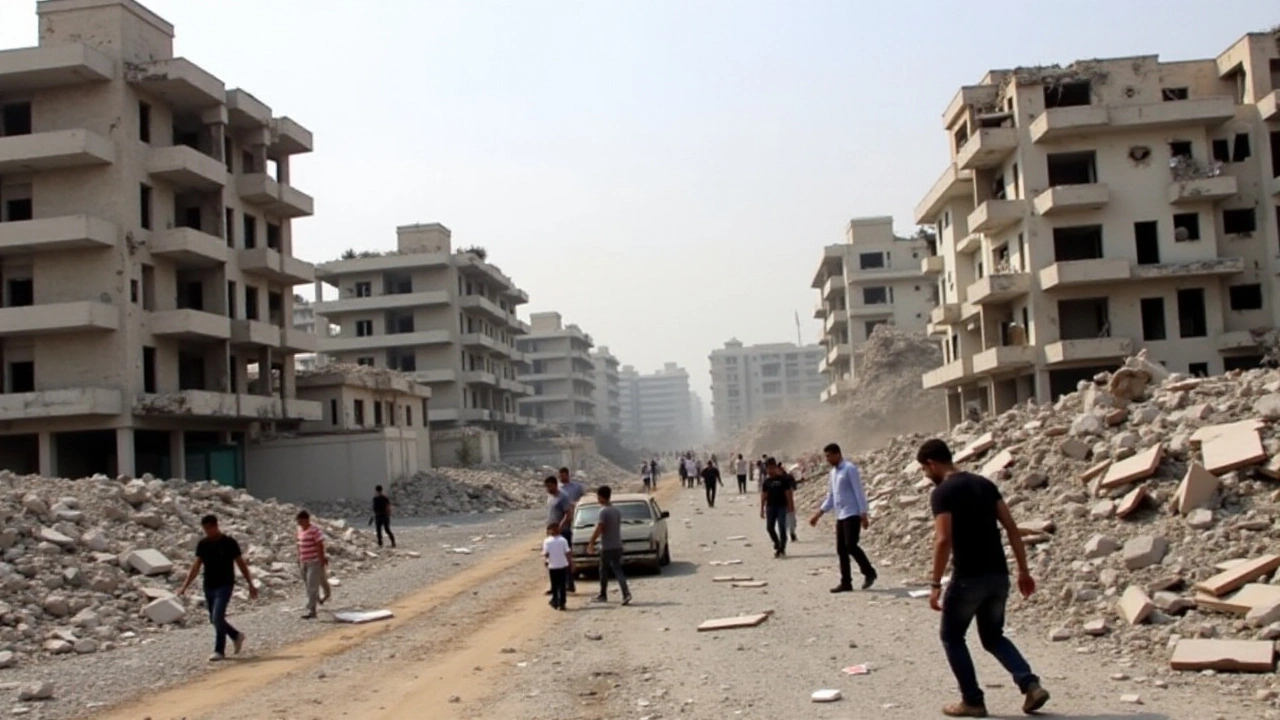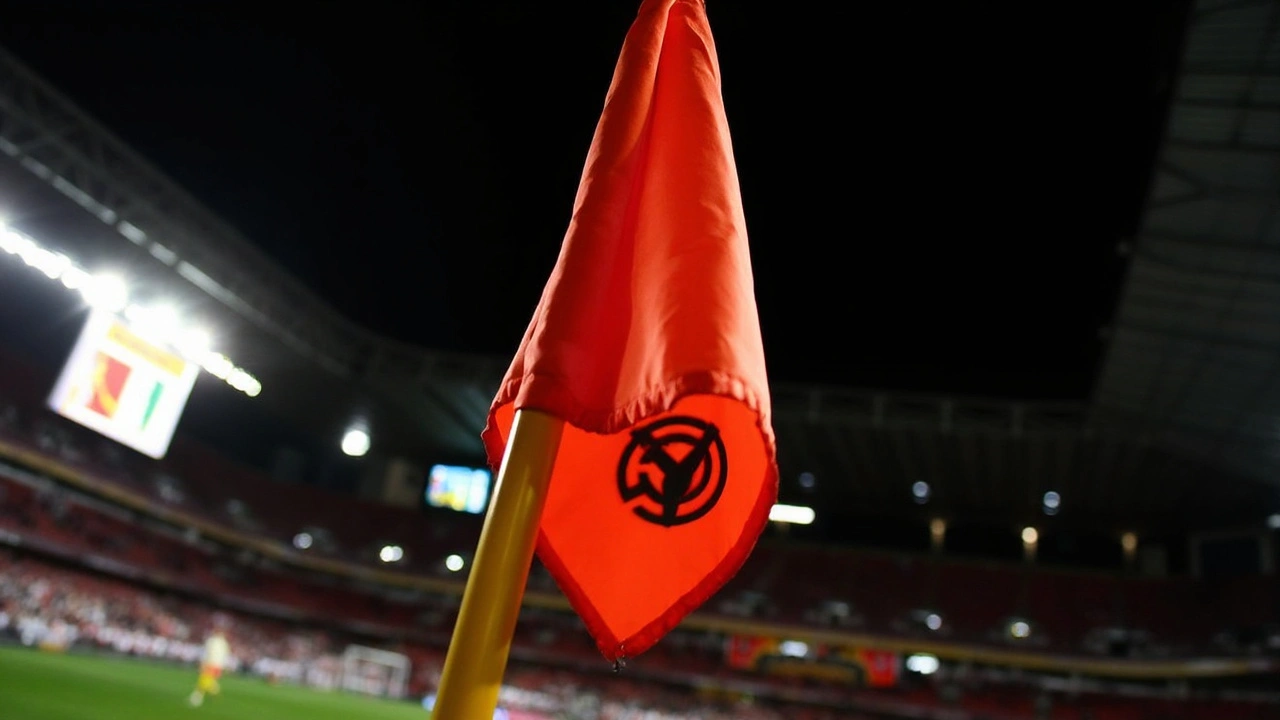Israel and Hezbollah Exchange Blows, Escalating Regional Tensions
In a significant escalation of regional hostilities, Israeli forces launched a series of airstrikes targeting Hezbollah positions in southern Lebanon. The militant group, which receives substantial support from Iran, retaliated with a barrage of rockets aimed at northern Israel. These developments follow an intensifying series of Israeli airstrikes that have claimed nearly 500 lives in Lebanon and displaced tens of thousands of people.
Overnight, Hezbollah claimed responsibility for attacking several Israeli military sites, including an explosives manufacturing facility located around 35 miles into Israeli territory and the Megiddo airbase near Afula. According to Israeli sources, over 50 missiles were fired from Lebanon into northern Israel on Tuesday morning. Most of these rockets were successfully intercepted by Israel's defense systems, but the tension remains palpable.
The situation has drawn significant attention and concern from global leaders. Iranian President Masoud Pezeshkian voiced his apprehensions about the potential for a region-wide conflict. He stressed that Hezbollah, despite being established and continuously supported by Iran since 1983, cannot single-handedly contend with a nation fortified by massive Western and European support, along with the backing of the United States. The stakes have never been higher as regional powers watch closely, weighing their next moves.
International Efforts to Mitigate Conflict
Josep Borrell, the European Union's chief diplomat, has characterized the escalating violence between Israel and Hezbollah as a situation teetering on the brink of all-out war. He highlighted the alarming rise in civilian casualties and the intensity of military actions on both sides. Borrell noted ongoing diplomatic efforts aimed at easing the tensions, but he warned that the nightmare scenario of a sprawling regional war is inching closer to reality.
The United States has also been actively engaged in attempts to curtail the conflict. A senior U.S. State Department official revealed that Washington is in talks with allies and regional partners to explore concrete measures to de-escalate the situation. Despite these diplomatic efforts, the violence has shown little sign of abating, with Lebanon experiencing its highest single-day death toll on Monday since the civil war that engulfed the country from 1975 to 1990.
The Human Toll and Strategic Objectives
Israel has justified the intensified airstrike campaign against Hezbollah by stating that it aims to force the group into pursuing a diplomatic resolution, ceasing its attacks, or withdrawing its forces from the contested border areas. However, many analysts and officials express doubt over the effectiveness of military operations in achieving these strategic goals. The use of airpower, while potent, has historically been limited in its capacity to produce long-term solutions to such complex geopolitical conflicts.
Observers and some diplomatic officials argue that Hezbollah has shown a willingness to cease its fire into Israel provided a ceasefire is established in Gaza. A U.S. State Department official commented that recent escalations in the region typically do not lead to significant stabilization, instead often exacerbating the turmoil and cycle of violence.
The conflict is not isolated to just the northern border of Israel. Following nearly a year of ongoing conflict with Hamas in Gaza, Israel has had to shift its military focus to confront the new challenges posed by Hezbollah. The current hostilities were triggered by a Hamas incursion on October 7, which saw around 60,000 people from northern Israel being evacuated. These individuals remain unable to return to their homes due to the volatile military exchanges occurring along the border with Lebanon.
Military Strategies and Civilian Impact
Israeli Defense Minister Yoav Gallant has been outspoken about the goals of the sustained airstrike campaign. He articulated that operations would continue until it is safe for residents of northern Israel to return to their homes. Gallant labeled Monday as a critical juncture in the ongoing conflict, citing substantial hits to entire units of militants, resulting in significant injuries to Hezbollah forces.
The Israeli military's operations have targeted an array of Hezbollah's weaponry, including long-range cruise missiles, heavy rockets, short-range projectiles, and explosive drones. Despite maintaining a defiant stance, Hezbollah is facing increased pressure from the relentless Israeli airstrikes. The group has already suffered substantial losses, most notably when a malfunction caused thousands of pagers and walkie-talkies to simultaneously fail last week, leading to 42 deaths and thousands of injuries amongst its ranks. Although widely attributed to Israeli interference, Israel has neither confirmed nor denied its involvement in that incident.
As the situation evolves, the international community remains on edge, hopeful for a de-escalation but braced for the possibility of broader conflict. The ongoing violence underscores the delicate and highly volatile nature of Middle Eastern geopolitics, with the potential to affect millions of lives both directly and indirectly. The region stands at a crossroads, with significant efforts needed from all parties to steer away from the brink of catastrophic war.





